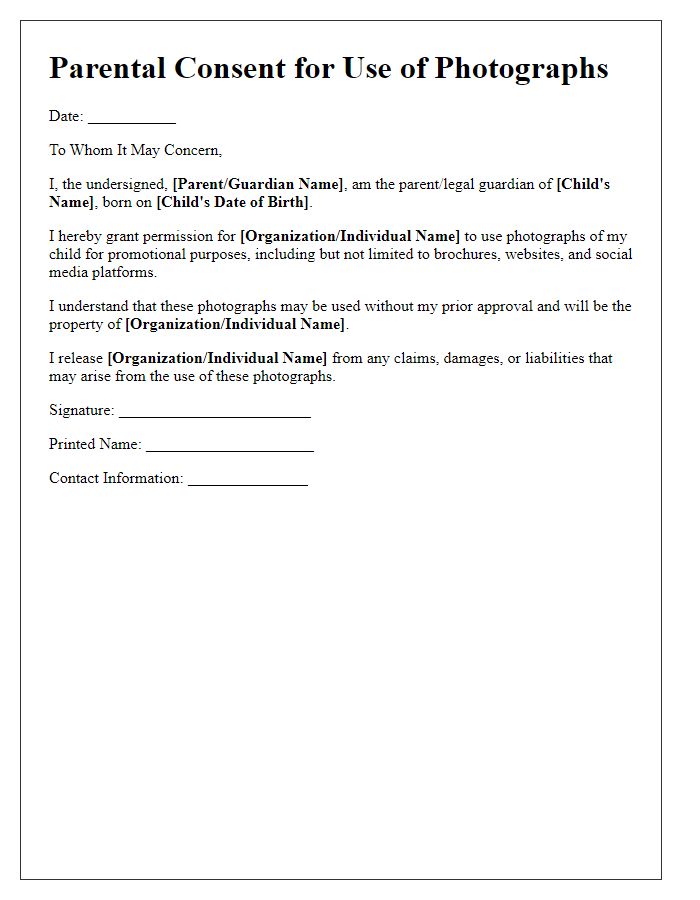Are you looking for a simple yet effective way to give parental consent for various activities? Writing a parental consent letter doesn't have to be daunting; it can be straightforward and to the point. This letter template will help you express your authorization clearly while also covering all necessary details. So, read on to discover the essential elements of a well-crafted parental consent authorization letter!

Clear identification of child and parent
Parental consent authorization documents typically require a clear identification of both the child and the parent or guardian. For instance, a document might specify the child's full name, date of birth, and address to establish their identity. Meanwhile, the parent's identification includes their full name, relationship to the child, and contact information such as phone number and email address. This ensures that the involved parties are accurately recognized, which is particularly critical in legal or medical contexts where consent is required for specific actions. Proper identification helps protect the rights and safety of the child while complying with applicable laws and regulations governing consent.
Specific activities or purposes
Parental consent authorization forms are vital for participation in specific activities such as school field trips, sports events, or medical treatments involving minors. These forms typically require detailed information regarding the child's name, age, the nature of the activity (for example, the upcoming school trip to the National History Museum on March 15, 2024), and the potential risks involved, such as transportation and outdoor engagements. Additionally, providing emergency contact information, any medical conditions or allergies, and the signature of a parent or guardian ensures accountability and safety. Properly filled out consent forms facilitate smoother execution of events and safeguard the well-being of children during organized activities.
Duration and time frame
Duration and time frame for parental consent authorization can vary based on specific activities like school trips, medical treatments, or extracurricular programs. Typically, consent forms detail the valid period, often ranging from a single event duration of one day (for field trips) to an entire academic year (for ongoing activities). Specific start and end dates may be included to clarify the timeframe, ensuring parents understand the limitations of their authorization. Revocation details could also be specified, empowering parents to withdraw consent at any time before the authorization period concludes.
Contact information for questions
Parental consent authorization is crucial in various scenarios, ensuring that minors receive appropriate permissions for activities or services. Providing clear contact information enhances the process, allowing parents to address any inquiries or concerns directly. A typical format includes a designated phone number, often a local area code, and an email address for formal communications. Specify the organization or entity requiring consent to establish context. Additionally, note availability hours, usually during business days, to guide parents when they can reach out for assistance effectively. This streamlined communication ensures a smoother consent process, instilling confidence for all parties involved.
Signature and date section
The parental consent authorization grants permission for specific activities involving minors. A signature section typically includes fields designed for clarity: the parent's or legal guardian's name, signature, and date of consent. This section serves as an official acknowledgment of the parent's or guardian's agreement to the terms outlined in the consent document. The signature must reflect validation, while the date specifies when the consent was granted, ensuring compliance with regulations surrounding minors' activities and safeguarding legal rights.













Comments